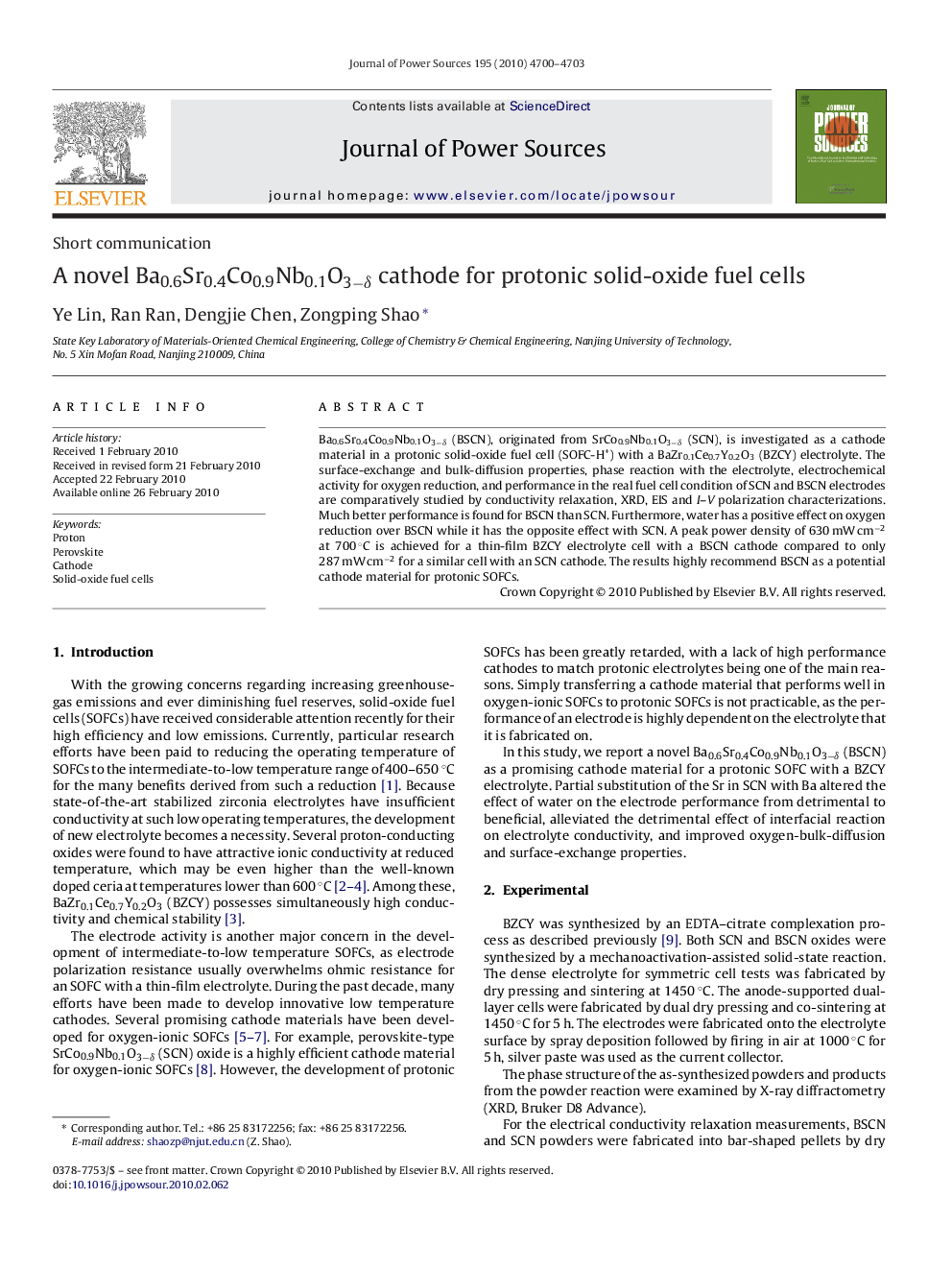| Article ID | Journal | Published Year | Pages | File Type |
|---|---|---|---|---|
| 1290083 | Journal of Power Sources | 2010 | 4 Pages |
Ba0.6Sr0.4Co0.9Nb0.1O3−δ (BSCN), originated from SrCo0.9Nb0.1O3−δ (SCN), is investigated as a cathode material in a protonic solid-oxide fuel cell (SOFC-H+) with a BaZr0.1Ce0.7Y0.2O3 (BZCY) electrolyte. The surface-exchange and bulk-diffusion properties, phase reaction with the electrolyte, electrochemical activity for oxygen reduction, and performance in the real fuel cell condition of SCN and BSCN electrodes are comparatively studied by conductivity relaxation, XRD, EIS and I–V polarization characterizations. Much better performance is found for BSCN than SCN. Furthermore, water has a positive effect on oxygen reduction over BSCN while it has the opposite effect with SCN. A peak power density of 630 mW cm−2 at 700 °C is achieved for a thin-film BZCY electrolyte cell with a BSCN cathode compared to only 287 mW cm−2 for a similar cell with an SCN cathode. The results highly recommend BSCN as a potential cathode material for protonic SOFCs.
